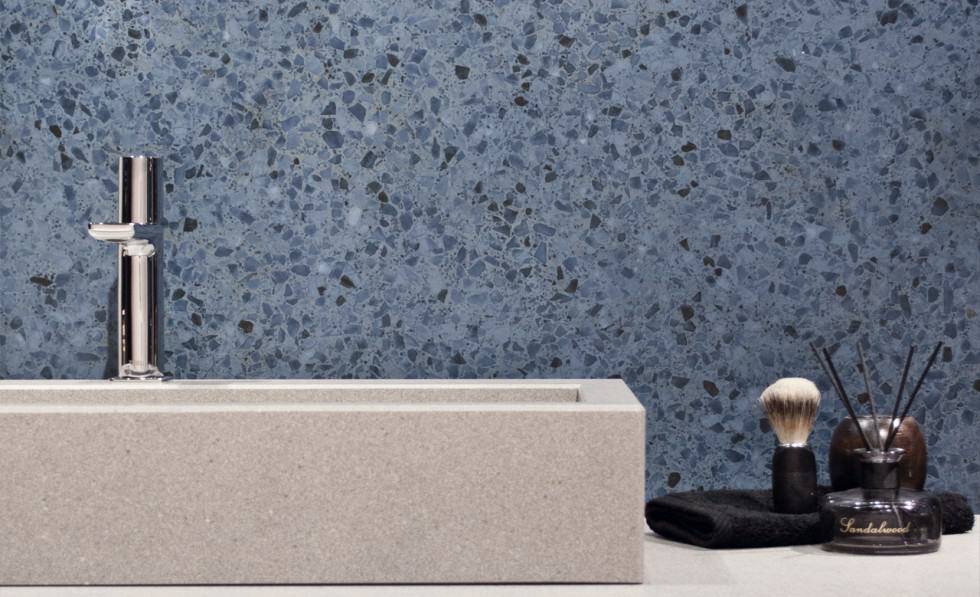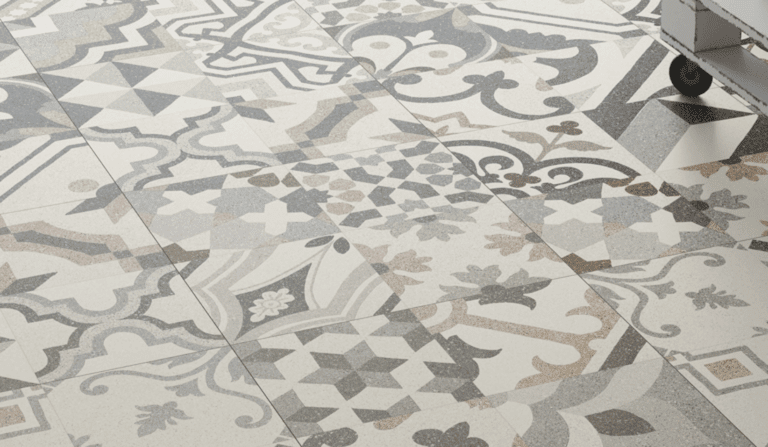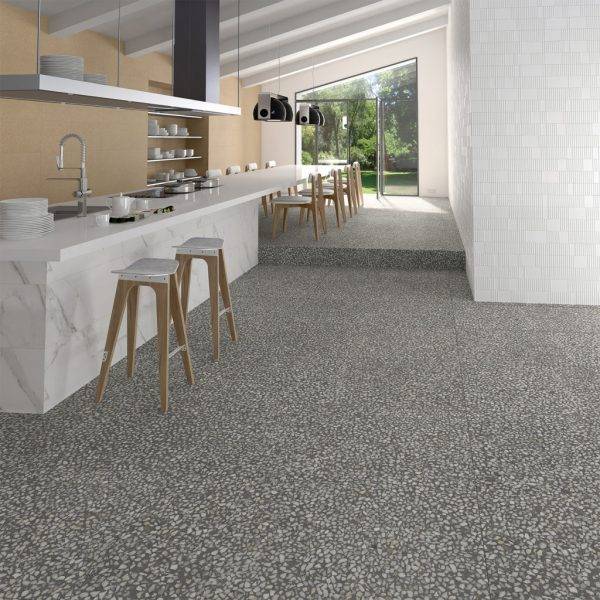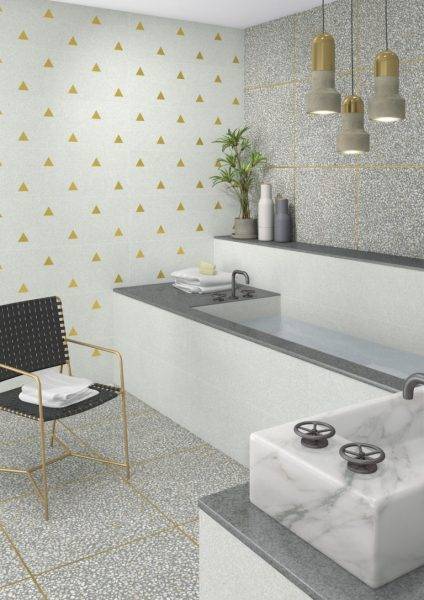The terrazzo look, or stracciatella look – from the Italian word ‘stracciato’ – is a revamped trend being showcased in design shows and trade fairs all over the world. Traditional terrazzo is made up of stone chips that were set in concrete and polished to create a smooth surface. The technique dates back to the mid-15th century where it was first used In Venice as a way to re-purpose left over pieces of marble from past installations. Today, the term terrazzo is used to describe an array of different surface materials decorated with various sized particles that are bonded together.


Many different ceramic tile collections feature the terrazzo look based off of the advantage that any color can be used both as the base of the tile and for the fragments themselves. The look is also popular because of the variety of fragment size variation that can be used to combine different finishes in the same color.

These finishes hold a classic look while simultaneously giving surfaces a modern feel. The look is no longer restricted just to floors either – now the material can be easily molded and applied to other volumes such as walls and kitchen surfaces. While it’s most common to see the terrazzo look in kitchens and bathrooms as decorative flooring, it can now be included in the vanities, shelving and counter tops for a classic, yet modern finish to any room.

This story was originally published in Ceraspaña 39, a journal published by ASCER/Tile of Spain to promote the use and benefits of Spanish ceramic tiles in contemporary architecture and interior design. Read the article and view past issues HERE.
Want more trends from Tile of Spain? Follow us on Facebook, Twitter, Instagram and Pinterest.






